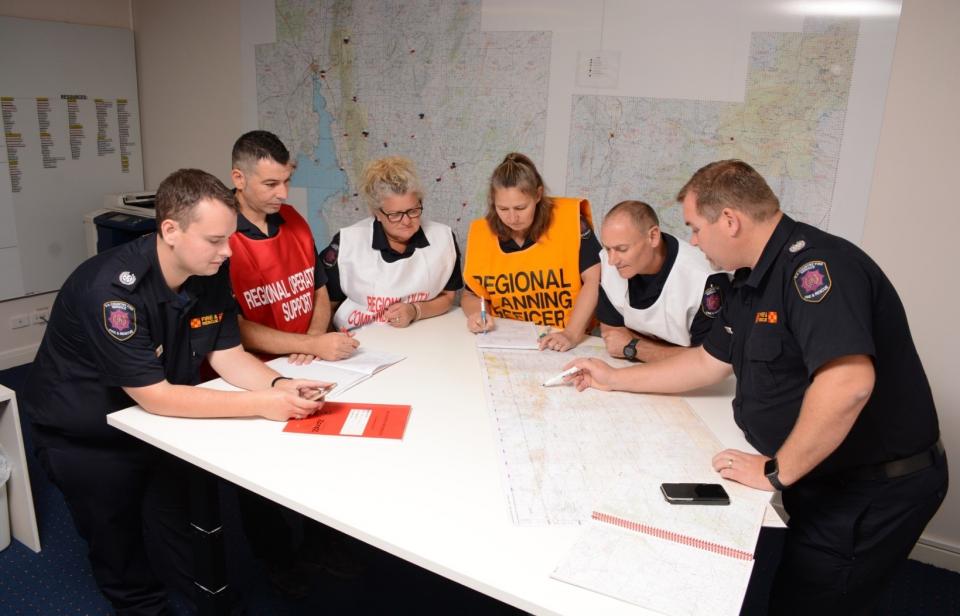
PUBLICATIONS
Published works

Improving decision making, teamwork and organisational learning in emergency management – final project report
| Title | Improving decision making, teamwork and organisational learning in emergency management – final project report |
| Publication Type | Report |
| Year of Publication | 2020 |
| Authors | Bearman, C, Brooks, B, Owen, C, Curnin, S, Hastings, P, Stuart, H |
| Document Number | 641 |
| Date Published | 01/2021 |
| Institution | Bushfire and Natural Hazards CRC |
| City | Melbourne |
| Report Number | 641 |
| Keywords | Decision making, Emergency management, organisational learning, teamwork |
| Abstract | Background: Each year Australian emergency management organisations coordinate the response to thousands of emergency events. While a successful outcome is achieved in the vast majority of these events, notable and ongoing concerns are being raised as to how well some of the emergency management teams have functioned. Often the problems are not based on technical skills (such as the use of equipment) but on the non-technical skills, such as: communication, coordination, situation awareness, and decision making. In addition, skills such as creativity and divergent thinking may be important in helping people to manage ever more complex emergencies. This project seeks to develop simple practical tools that can help people to better manage their teamwork, improve their decision making and develop more creative solutions. In addition to developing these tools this project also considers how organisations utilise the outcomes of research. Application of research in support of organisational learning is critical not just for organisational growth, competitiveness and sustainability but also for wide-scale industry development, community and economic well-being. However, maximising organisational learning from research often falls short. As part of this project we will seek to develop a tool to help agencies to utilise research more effectively. Method: The tools were developed using a human-centred design approach. This approach placed the end-user very much at the heart of the development process so that the tools were effectively co-created with end-users. Embedding end-users into the research and design process has two goals, 1) to produce effective tools that are designed around the end-user and 2) to create the right context for the adoption of the tools by emergency management agencies. In this way we have brought utilisation to the centre of the project, embedding it within the research process so that utilisation informs and is informed by the research from the beginning of the project. Research and tool development: A number of tools were developed to help people to better manage their teamwork and decision making. These tools include:
In addition to creating tools that help better manage teams and make more effective decisions, members of the project team have also developed methods to help people to act more creatively during operations (such as stretch thinking loops for team decision making). To help end-users to diagnose their capacity to utilise research a self-assessment tool was developed (known as the self-assessment research utilisation maturity matrix or RUMM). This tool can be used by practitioners to identify steps needed to move along the path towards research implementation. Utilisation: These tools have now seen excellent utilisation by emergency management agencies in Australia and have attracted growing interest from international partners in the UK and Spain. The teamwork tools have been used to help manage both simulated and real-life emergencies; to conduct debriefs and after-action reviews; to design response plans; and to evaluate emergency management arrangements. The research utilisation maturity matrix (RUMM) has been used to inform future research planning, to assess existing capability in research utilisation and to inform future policy decisions. The tools that we have created have been included in a number of key industry publications (such as AFAC Lessons Management Handbook) and a number of agencies have changed their standard operating procedures to facilitate use of the tools. Conclusion and next steps: This project has developed a number of products that can help people in emergency management to better manage non-technical skills, improve creativity and assess their ability to utilise the products of research. The next steps are to help agencies to better embed these tools so that they become part of normal everyday business. |
| Refereed Designation | Refereed |
Published Works


